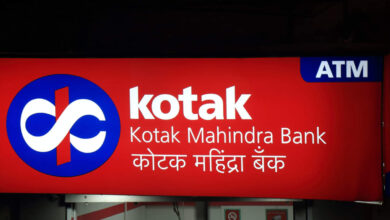Instacart IPO: Navigating the Market’s New Terrain

In the dynamic landscape of the tech industry, the highly anticipated Instacart IPO has garnered significant attention, symbolizing a critical juncture for both the company and the evolving online grocery delivery market. This in-depth article aims to dissect the various facets of the Instacart IPO, exploring its implications, challenges, and potential trajectory in the burgeoning sector of tech-driven retail solutions
The Genesis of Instacart and the Path to IPO
Instacart’s journey to its initial public offering (IPO) is a tale of rapid growth, adaptation, and strategic foresight. Founded in 2012, Instacart entered the market as an ambitious startup aiming to revolutionize the grocery shopping experience. By leveraging technology to offer a convenient, app-based grocery delivery service, the company tapped into a niche market that would soon witness exponential growth.
The path to the IPO was paved with significant milestones and strategic decisions. Instacart’s early adoption of a gig economy model allowed for rapid scalability and flexibility, catering to a diverse range of customer needs. The company’s ability to form partnerships with major grocery chains was crucial in expanding its reach and consolidating its market presence.
However, the road to IPO was not without its challenges. Instacart faced competition from other delivery services and traditional retailers expanding into the online space. Additionally, the company had to navigate complex logistics, evolving consumer behaviors, and the impact of regulatory changes on the gig economy. Despite these challenges, Instacart’s resilience and adaptive strategies have positioned it as a leading player in the online grocery delivery sector, culminating in the move to go public.
Market Dynamics and the Timing of the IPO
The timing of Instacart’s IPO is a critical element in understanding its market implications. The online grocery delivery sector experienced unprecedented growth during the COVID-19 pandemic, as lockdowns and health concerns prompted a surge in demand for delivery services. This period marked a significant acceleration in consumer adoption of online grocery shopping, a trend that Instacart was well-positioned to capitalize on.
However, the decision to launch an IPO comes at a time of shifting market dynamics. With the gradual easing of pandemic-related restrictions, there is uncertainty about the sustainability of the heightened demand for delivery services. Moreover, the broader economic environment, characterized by fluctuations in the stock market and investor sentiments, poses additional considerations for Instacart’s IPO strategy.
Financials and Valuation: The Core of the IPO
A central aspect of the Instacart IPO is its financials and valuation. The company’s revenue growth, driven by the surge in demand during the pandemic, has been impressive. However, profitability remains a key concern for investors. The cost-intensive nature of the delivery business, coupled with intense competition, means that Instacart must demonstrate a viable path to long-term profitability.
The valuation of Instacart’s IPO will reflect investor confidence in the company’s growth potential and business model. It is a balancing act between the company’s current market position and the inherent risks and uncertainties of the evolving grocery delivery sector. The final valuation will also be influenced by broader market conditions and investor appetite for tech and gig economy stocks.
Strategic Implications and Future Growth
The strategic implications of the Instacart IPO extend beyond the company itself, influencing the broader online grocery delivery sector and the tech industry at large. A successful IPO could validate the online grocery business model, potentially attracting more investment and innovation in the sector. It may also prompt traditional retailers to accelerate their digital transformation strategies to compete more effectively in the changing landscape.
For Instacart, the IPO represents an opportunity to invest in growth, technology, and market expansion. The infusion of capital could be used to enhance its technological capabilities, expand its service offerings, and explore new markets. Additionally, going public will subject Instacart to greater scrutiny and accountability, necessitating a strong focus on operational efficiency, customer satisfaction, and sustainable growth.
Challenges and Considerations for Investors
Investors considering the Instacart IPO must navigate a complex array of challenges and considerations. Key among these is the uncertainty regarding the post-pandemic market landscape for online grocery delivery. Investors must assess whether the pandemic-induced surge in demand represents a permanent shift in consumer behavior or a temporary spike.
Furthermore, the competitive landscape poses significant risks. With major tech companies and traditional retailers vying for a share of the online grocery market, Instacart must continuously innovate and differentiate its offerings to maintain its competitive edge. Regulatory changes affecting the gig economy, labor costs, and operational logistics are additional factors that investors need to consider.
Conclusion: A Defining Moment in the Online Grocery Space
The Instacart IPO stands as a defining moment in the online grocery delivery space, marking a new phase in the industry’s evolution. It encapsulates the challenges and opportunities inherent in the tech-driven retail sector, reflecting broader trends in consumer behavior, technology adoption, and market dynamics.
As Instacart navigates the public markets, its performance will be closely watched by investors, competitors, and industry analysts. The outcome of this IPO will not only shape the future of Instacart but also signal the maturity and potential of the online grocery delivery model. In a rapidly evolving market, the Instacart IPO is more than just a financial milestone; it is a litmus test for the viability and resilience of tech-driven solutions in transforming traditional industries.



